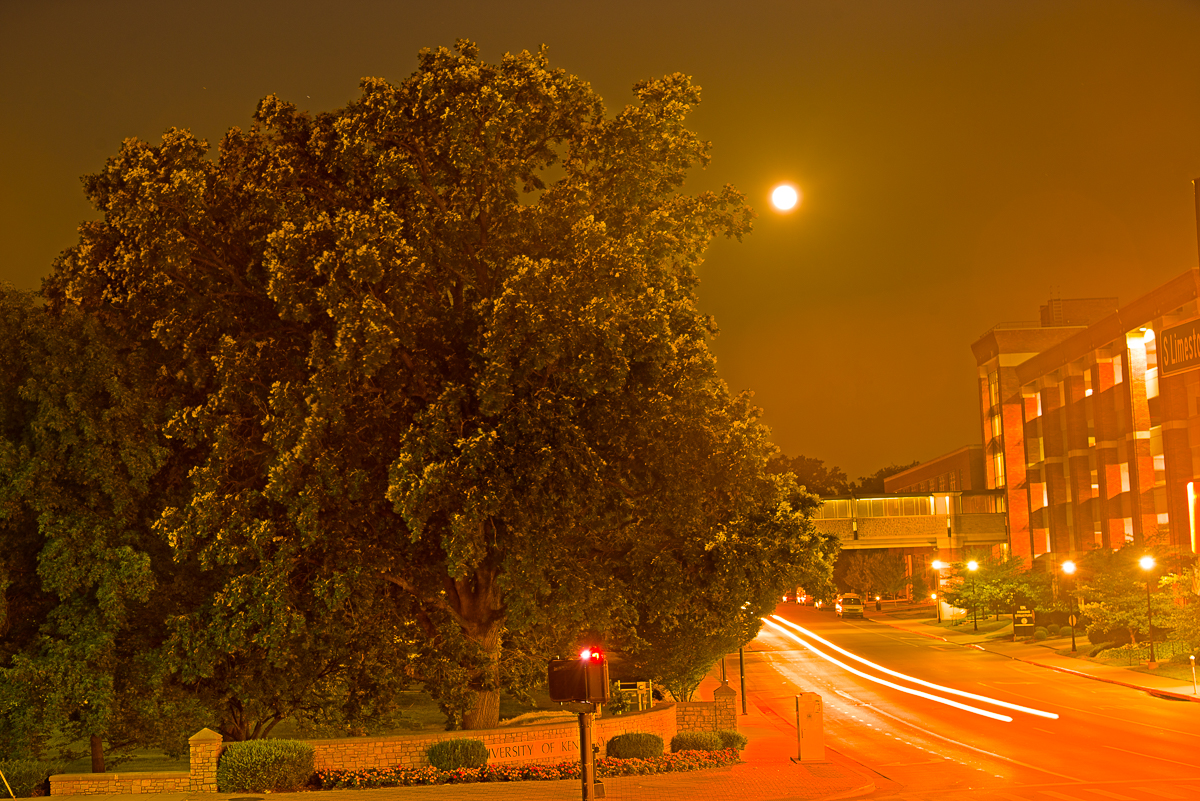Urban trees live with all kinds of stresses that their forest cousins do not - road salt, soil compaction, lawn mower strikes. They also live in a different light environment, one in which it is never completely dark. Spend the night deep in the woods and the only light you will see is from the stars and moon. This is what trees experience - bright light in the day, complete dark at night. Trees evolved with a regular, predictable transition from day to night. They have developed exquisitely sensitive ways of measuring light so that they know the exact day length. They also measure shadows so they know the distance to other trees. Pollinators of trees like moths and bats also depend on the dark of the night.
What happens when we suddenly (in evolutionary time) add bright lights to our cities and plant trees? The use of gas lanterns for lighting streets began around 1816 and spread to cities throughout the world. People soon noticed trees doing very strange things near these lights - losing leaves in midsummer, or growing strange branches, or roots growing on stems. Many trees died. Observers soon realized that it wasn't the light but the illumination gas causing these effects. Dimitry Neljubow, a graduate student in Russia, realized that illumination gas was causing abnormal growth and in 1901 published the discovery that ethylene, a component of illumination gas, was causing abnormal growth. By 1935, scientists had realized that ethylene was a plant hormone, produced by plants in the normal course of growth. Ethylene is what makes bananas ripen and apples rot.
With the advent of electric lighting, the gas problem went away. But light itself has powerful effects on tree growth. Watch the trees on your street and you may notice that trees near street lights sometimes hold their leaves longer on the side facing the light.
There is not enough light in street lighting for photosynthesis. Instead, the effect of street lights on trees can be to change their sense of time. Trees tell time with a molecular clock that is very sensitive to red light and far red (nearly infrared) light. Many processes in trees, such as leaf drop or the formation of buds, depend on the tree's exquisite sense of day length. Light at night can interrupt this clock. The more red light in a street lamp, the more it will affect a tree's growth.
The problem with coming up with some general rules about street lights and trees is that there are too many variables. Distance between a light and a tree is most important - light intensity falls off as the fourth power of the distance, so a light four feet from a tree is 0.0001 times as powerful as a light 1 foot away. We are constantly changing the color of street lights. We used to use fluorescent (almost no red), then went to sodium vapor (very red) and now to white LED (very little red).
Overall, I think that street lights do affect the growth of trees but in subtle ways that are hard to observe. An effect on flowering and seed set, which is very likely would not typically be noticed in street trees. I suspect that if we paid closer attention, we would find a wide variety of effects.
There is, perhaps, a more important but indirect effect of street lights on trees, and that is on the nocturnal insects and bats that pollinate trees and on nocturnal mammals that use trees as habitat. For example, street lights enhance the ability of insect predators to find their prey.

